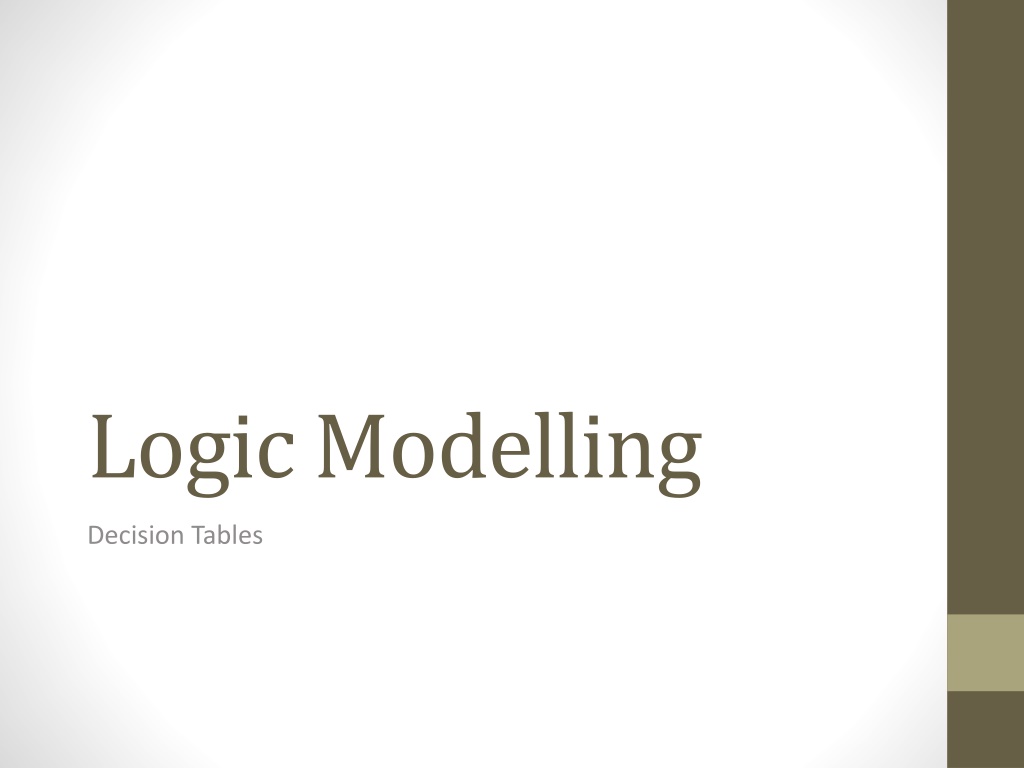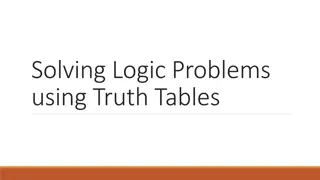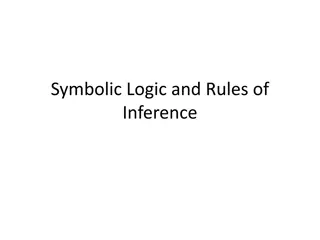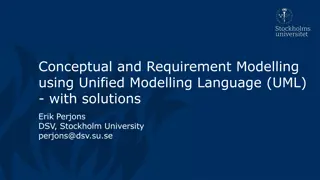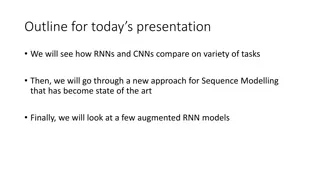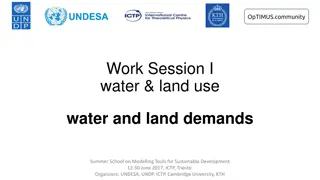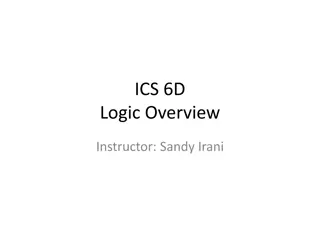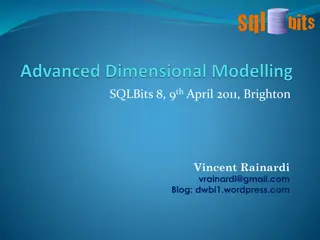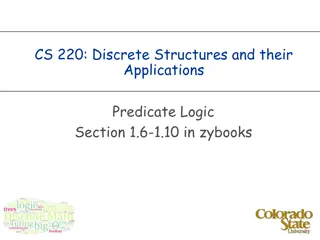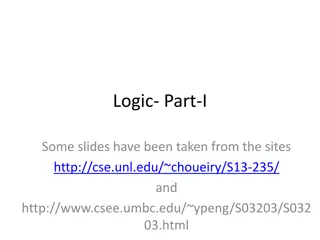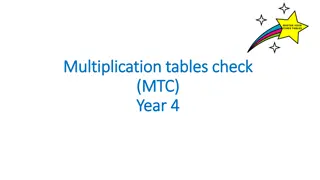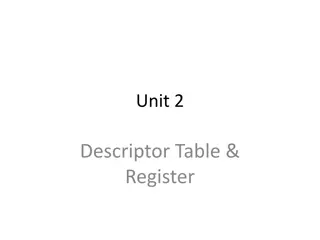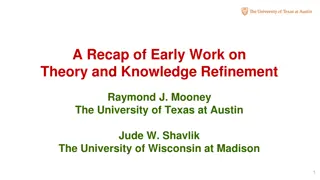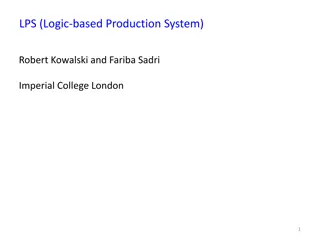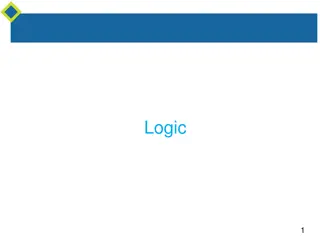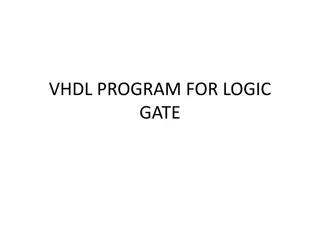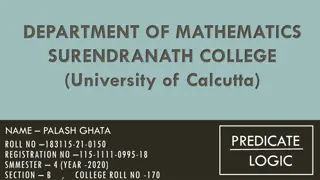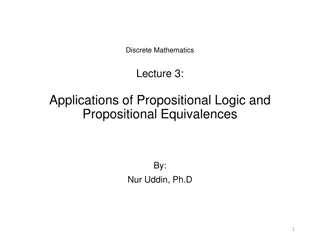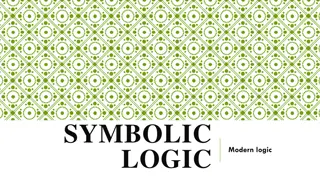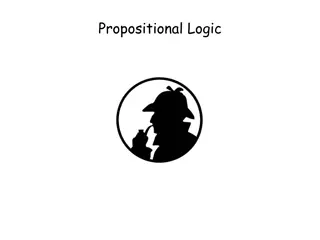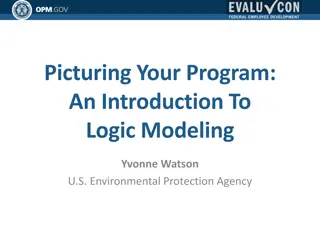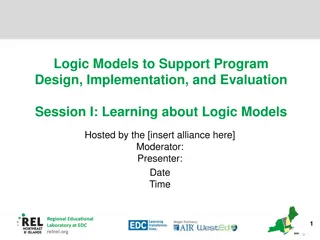Decision Tables in Logic Modelling for Rule-based Decision-making
Explore the process of creating decision tables in logic modelling to make rule-based decisions. Understand the conditions, actions, and resulting rules through practical examples involving scenarios like campus burglar alarms and customer mailings. Simplify complex decision-making logic for efficient problem-solving.
Download Presentation

Please find below an Image/Link to download the presentation.
The content on the website is provided AS IS for your information and personal use only. It may not be sold, licensed, or shared on other websites without obtaining consent from the author. Download presentation by click this link. If you encounter any issues during the download, it is possible that the publisher has removed the file from their server.
E N D
Presentation Transcript
Logic Modelling Decision Tables
Modeling Logic with Decision Tables Procedure for Creating Decision Tables Name the condition and the values that each condition can assume. Name all possible actions that can occur. List all possible rules. Define the actions for each rule. Simplify the table. 2
Q1: Create a decision table- Students Campus Burglar Alarm When a burglar alarm sounds, if it is in one of students houses where alarm sounds every week, ignore it. Otherwise have a look outside and if the house looks not broken into and there is nobody moving inside it, ignore the alarm. Otherwise call police. List the resulting rules. 3
A1: Decision Table Students Campus Burglar Alarm Rule Stub Rule 1 Rule 2 Rule 3 Rule 4 Condition Stub One of those houses Y Y N N Suspicious activity Y N Y N Action Stub Ignore X X X Call Police X 4
A1: Simplified Decision Table Students Campus Burglar Alarm Rule Stub Rule 1 Rule 2 Rule 3 Condition Stub One of those houses Y N N Suspicious activity - Y N Action Stub Ignore X X Call Police X 5
A1: Resulting Rules- Students Campus Burglar Alarm Rule 1: if one of those houses then ignore Rule 2: if not one of those houses and suspicious activity then call police Rule 3: if not one of those houses and not suspicious activity then ignore Note: rule 2 will work just as well if skip the first check: Rule 2: if not suspicious activity then ignore 6
Q2: Create a decision table- Mailing Customers A mailing is to be sent out only to special customers. The content of the mailing is about the current level of discounting and potential levels of discounting. The content is different for different types of customers. Customer Types A, B and C get a normal letter except Customer Type C, who get a special letter. Any customer with 2 or more current lines or with a credit rating of X get a special paragraph added with an offer to subscribe to another level of discounting. 7
A2: Missing Information- Mailing Customers Questions? 2 or more current lines ORcredit rating X . What if both: AND? Other customer types? See O-Other above. 8
A2: Possible solution- Mailing Customers 9
A2: Possible solution- Mailing Customers Exclude the O-Others from the decision table and suppose that the description states that: 2 or more current lines AND/ORcredit rating X . Rule Condition Stub 1 2 3 4 5 6 7 8 9 10 11 12 Customer Type A A A A B B B B C C C C 2 or more Lines Y Y N N Y Y N N Y Y N N Credit rating = X Y N Y N Y N Y N Y N Y N Action Stub Normal Letter X X X X X X X X Special Letter X X X X 10 Add Paragraph X X X X X X X X X
A2: Possible solution- Mailing Customers Simplify the Table Rule 1 A Y - X Condition Stub 2 A N Y X 3 A N N X 4 B Y - X 5 B N Y X 6 B N N X 7 C Y - 8 C N Y 9 C N N Customer Type 2 or more Lines Credit rating = X Normal Letter Special Letter Add Paragraph Action Stub X X X X X X X X X 11
